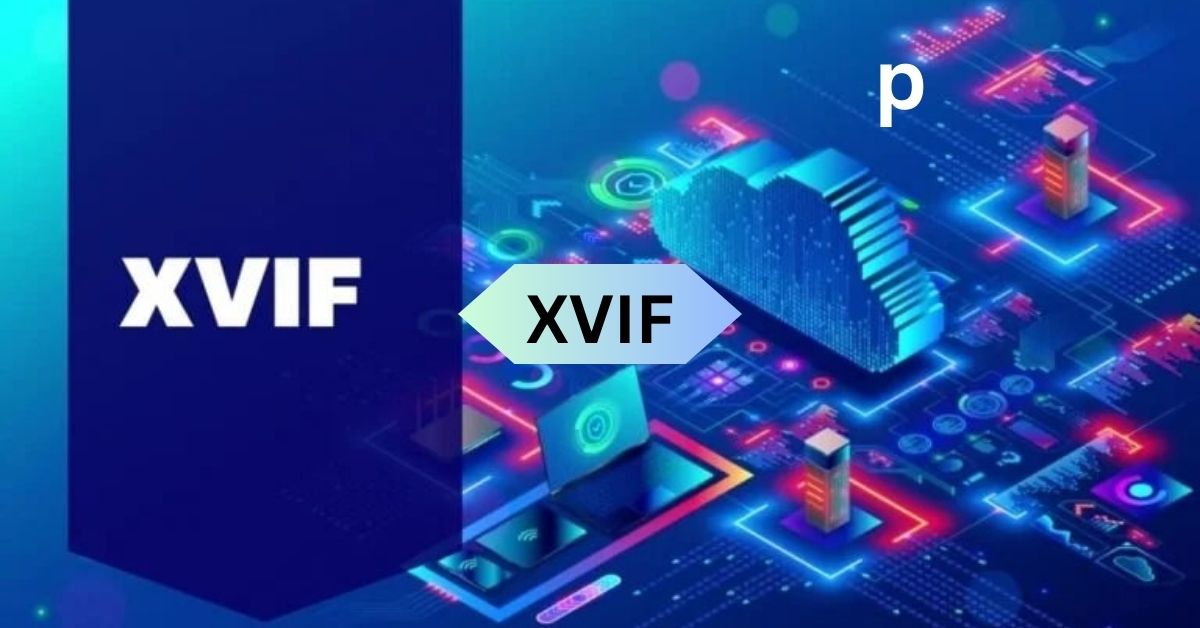XVIF – Unlock A World Of Seamless Connectivity!
XVIF has revolutionised my gaming experience, seamlessly blending my gestures and voice commands for an immersive adventure. With XVIF, navigating my smart home is effortless, controlling lights and temperature with a simple touch, enhancing my daily routines.
XVIF is a cutting-edge technology that changes how we interact with digital devices by smoothly combining gestures, voice commands, and data syncing. It makes gaming more immersive, smart home control easier, and healthcare management simpler.
This article explores XVIF’s components, its history, real-world applications, and the benefits and challenges it brings.
Understanding XVIF: Components and Functionality

1. What is XVIF?
XVIF, which stands for eXtensible Virtual Interface Framework, is an advanced technology designed to improve how we interact with digital devices. It creates a smoother and more intuitive user experience by combining different input methods like touch, voice, and gestures.
2. Key Components of XVIF:
XVIF is made up of several important parts that work together to create a powerful and efficient system:
3. Interface Engine:
This is the heart of XVIF, managing all interactions between the user and the digital environment. It ensures inputs from various sources are accurately interpreted and processed in real time.
4. Data Management Layer:
This part handles storing, retrieving, and updating data across devices. It keeps user data consistent and accessible, no matter which device is used.
5. Connectivity Module:
This module supports different communication methods, allowing XVIF to connect smoothly and securely with various networks, devices, and APIs.
6. User Experience (UX) Framework:
This component, designed to improve usability, includes templates and tools that help developers create user-friendly and engaging interfaces.
7. How XVIF Works:
XVIF understands inputs from touchscreens, voice commands, or gestures using advanced algorithms. It processes and updates the system in real-time, keeping interactions logged.
It then fetches data or triggers actions across platforms. Finally, it presents the processed data in an easy-to-use format on various devices, ensuring a smooth user experience.
8. Technical Specifications:
XVIF is designed to be:
- Scalable: Suitable for both small applications and large enterprise systems.
- Secure: Incorporates strong encryption and authentication to protect data.
- Compatible: Works well with different operating systems, devices, and browsers without significant adjustments.
The Evolution of XVIF: History and Development:

1. Origins of XVIF:
XVIF, or eXtensible Virtual Interface Framework, began in the early 2000s. It was created to improve how digital devices and platforms connect and interact. Initially, it was a simple interface protocol designed to make these connections smoother and more efficient.
2. Development Milestones:
Initial Conceptualization:
XVIF was designed to support various devices and integrate touch, voice, and gesture inputs for smoother user interactions.
Prototype Development:
By the mid-2000s, the first prototype focused on improving video streaming and making virtual interfaces more responsive.
AI and Machine Learning Integration:
XVIF began using AI to predict user behavior and personalize the system, enhancing efficiency.
Expansion to New Technologies:
XVIF adapted to augmented and virtual reality, requiring advanced data processing.
Standardization and Open Source: To broaden its use, XVIF became standardized and partially open-source, inviting global developer contributions.
3. Evolution Over Time:
XVIF has evolved from a simple protocol to a complex framework for advanced virtual environments. It now incorporates machine learning to enhance functionality based on user interactions.
Additionally, XVIF supports a wide range of platforms, including mobile devices, wearables, and IoT devices, showcasing its versatility.
4. Current State:
Today, XVIF is a mature technology providing powerful tools for developers to create engaging user experiences. Its ability to integrate with various technologies and its open development model continues to drive innovation.
5. Reflection on the Journey:
The development of XVIF highlights the broader trends in technology: moving towards more integrated, user-centered, and adaptive digital environments. XVIF’s history shows its potential to evolve in response to user needs and technological advancements, shaping how we interact with digital content.
Applications and Impact of XVIF:
6. Smart Home:
XVIF enables seamless control of smart home devices using voice commands and gestures, making daily routines more convenient.
7. Healthcare:
XVIF-powered devices sync medical data across platforms, offering real-time insights and personalised patient care.
8. Gaming:
Gamers experience immersive adventures with XVIF’s integration of gestures and voice commands, enhancing gameplay.
9. Education:
XVIF supports interactive learning by integrating virtual and augmented reality, making education more engaging and effective.
10. Workplace Efficiency:
XVIF improves productivity by streamlining communication and automating tasks through its advanced interface capabilities.
XVIF’s impact is profound. It enhances user experiences across various fields, making technology more accessible and intuitive.
Advantages and Challenges of XVIF:

1. Advantages:
- Improved User Experience: XVIF offers a personalised and intuitive interface by integrating various input methods, such as touch and voice commands.
- Enhanced Interconnectivity: XVIF facilitates seamless communication between devices and platforms, making systems more cohesive.
- Scalability: XVIF can scale to meet the needs of different projects, from small applications to large-scale industrial systems.
2. Challenges:
Integrating XVIF into existing systems can be challenging due to its complexity, demanding specialised skills and resources. Moreover, XVIF’s connectivity raises concerns about security breaches, emphasising the need for robust measures to safeguard data.
Additionally, the initial investment for implementing XVIF, particularly in large-scale operations, can be substantial, highlighting the importance of thorough budgeting and planning to ensure its successful deployment.
XVIF in the Digital Era: Current Trends and Future Prospects
1. Current Trends:
Consumer Electronics Integration:
XVIF is increasingly integrated into consumer electronics, such as smart devices and home automation systems, to provide users with more intuitive and responsive interfaces.
AI and IoT Integration:
There is a growing trend of integrating XVIF with Artificial Intelligence (AI) and the Internet of Things (IoT) to create smarter, context-aware systems that anticipate user needs and automate tasks.
Healthcare and Education Adoption:
In healthcare, XVIF facilitates remote patient monitoring and personalised treatment plans, while in education, it enhances interactive learning experiences through virtual and augmented reality.
2. Future Prospects:
XVIF will enhance virtual and augmented reality, making them more lifelike by seamlessly blending real-world and digital elements. It’s also poised to fuel pervasive computing, integrating information processing into daily objects for improved efficiency.
Moreover, XVIF could promote sustainability in digital practices by optimising data processing and minimising the use of physical interfaces, which would contribute to energy conservation.
Integrating XVIF: Best Practices and Innovations
1. Best Practices:
Before integrating XVIF, it’s crucial to analyse organisational needs thoroughly, identify gaps, and set clear objectives. Engaging stakeholders early in the planning stage, including IT teams and end-users, ensures alignment of goals and expectations.
Implementing XVIF in phases allows for managing complexity and refining processes based on feedback, reducing risks associated with large-scale deployments.
2. Innovations:
XVIF can transform smart city operations by integrating traffic management, public safety, and utility services into a single interface, streamlining city management tasks.
Retailers can enhance customer experiences using XVIF by providing personalised shopping through virtual fitting rooms and AI-driven product suggestions.
In education, XVIF enables adaptive learning platforms, adjusting content and pace to match each student’s performance, thereby optimising learning outcomes.
XVIF and Its Role in Security and Privacy:

XVIF is vital for security and privacy in digital realms, but its connectivity and adaptability pose challenges. XVIF employs strong security measures like encryption and authentication protocols to address this.
It also focuses on privacy with user consent and data minimisation. Yet, integration complexity, compatibility, and scalability remain challenges, demanding continuous innovation in security practices.
FAQs:
1. Can XVIF guarantee complete security in digital environments?
While XVIF incorporates robust security measures, achieving complete security in dynamic digital landscapes remains a continuous effort that requires ongoing adaptation and innovation.
2. How does XVIF balance security and usability?
XVIF strives to maintain a delicate balance between security and usability by implementing user-friendly security features that do not compromise the overall user experience.
3. How does XVIF address emerging security threats in the digital landscape?
XVIF remains vigilant against emerging security threats by continuously monitoring industry trends, conducting threat assessments, and implementing proactive security measures to mitigate risks.
Conclusion:
XVIF technology is pivotal in safeguarding security and privacy in our increasingly digital world. While it presents challenges, its robust security features and privacy considerations are vital to creating safer digital environments. With ongoing innovation and collaborative efforts, XVIF continues to evolve, promising a future where security and privacy are paramount in all digital interactions.







